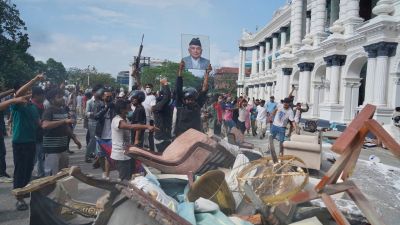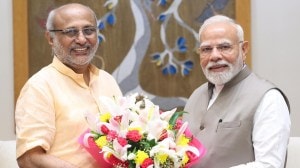Mid-day meal best course for schools yet states don’t bite
There is some good news on the Mid Day Meal (MDM) scheme. Findings of a survey released today show that because of this scheme, school enrol...

There is some good news on the Mid Day Meal (MDM) scheme. Findings of a survey released today show that because of this scheme, school enrolment between July 2001 and July 2002 went up by 14%, with a particularly impressive jump (19%) for girls. The figure in the ’90s was just 2%.
But the good news is limited to those states that have implemented the scheme eight years after it was introduced—and three years after the stick was wielded by the Supreme Court.
Most states are yet to implement it effectively, the worst news coming from the Hindi heartland, including Uttar Pradesh and Bihar. These states are big contributors to India’s 50 million under-nourished children, the highest in the world—a higher percentage than even Sub-Saharan Africa.
The survey, by noted economist Jean Dreze and involving Nobel Laureate Amartya Sen by the New Delhi-based Centre of Equity Studies, covers three states, Chhattisgarh, Karnataka and Rajasthan.
‘‘Even if it does not lure people to get better education, every iota spent on it is worth it,’’ said Sen, pointing out the wonders it does in eliminating nutritional deficiency, attention deficiency and social inequality.
For those policy-makers pleading lack of funds for non-implementation, here are a few statistics:
• The recurring cost of a national mid-day meal programme covering all children adds up to Rs 2,900 crore per year — less than 0.2% of India’s GDP, and barely 10% of India food subsidy.
• Even the total foodgrain required is 1 million tonnes, a small proportion of 70 million tonnes rotting in FCI godowns. Though successfully run for over two decades in states like Tamil Nadu, The Government launched this centrally sponsored scheme in 1995.
Under this programme, cooked mid-day meals were to be introduced in all government and government-aided primary schools within two years. Six years later, most state governments are yet to implement it.
In November 2001 in response to a PIL, the Supreme Court ordered states to implement it within six months.
Karnataka has fared the best in the three states — most cooks have helpers, 31% of the kitchens have pucca kitchens.
What is heartening is that Rajasthan has done the best in food logistics and monitoring. It reported timely delivery of grain, teachers invariably described the quality of grain as ‘‘above average.’’
‘‘Though a BIMARU state, it threw its weight behind the Supreme Court order, showing what a bit of political will can do,’’ said economist Jean Dreze, author of the report based on the survey. It even set up a high-level monitoring committee to supervise the programme.
It seems to be benefiting girls most dramatically: In the case of Chhattisgarh and Rajasthan, the increase in overall Class I enrollment is driven by sharp increase in enrolment of girls: 17% and 29% respectively. For boys, the increase is much smaller (5 and 7%).
Some of the salient findings:
• 76% of head teachers reported that MDM has boosted pupil enrolment and 69% said it has enhanced pupil interest in studies.
• 96% of the parents surveyed said MDM should continue and 88% said quality of food is satisfactory.
• Contrary to popular perception that there is caste conflict because of intermingling of castes and the presence of Dalit cooks, the report has found strong indicators that caste barriers, such as they are, get weakened over time.
• 97% of the head-teachers said ‘No’, when asked if any upper caste parents ever objected to their children sharing a meal with children of other castes.
• 96% of the parents surveyed said ‘No’, when asked whether their children experience any discrimination at school, at the time of MDM because of their caste.
Another apprehension that the food is a health hazard is also not true — 90% of the children had no problem.
However, the basic problem is ‘‘shoe-string budget.’’ The states are spending 0.50 paisa per child instead of the required Re 1, spent by states like Karnataka and Tamil Nadu.
The report has concluded that in Chhattisgarh, the scheme has been launched half-heartedly, financially and politically with deficient arrangements and scant monitoring.
The report concludes that there is an urgent need to increase financial allocations, improve infrastructure and close monitoring. A more nutritional and a varied lunch menu would also help. ‘‘MDM is an important terrain of future engagement not just for the state, but for social movements and indeed public at large,’’ says the report.
Photos



- 01
- 02
- 03
- 04
- 05



























